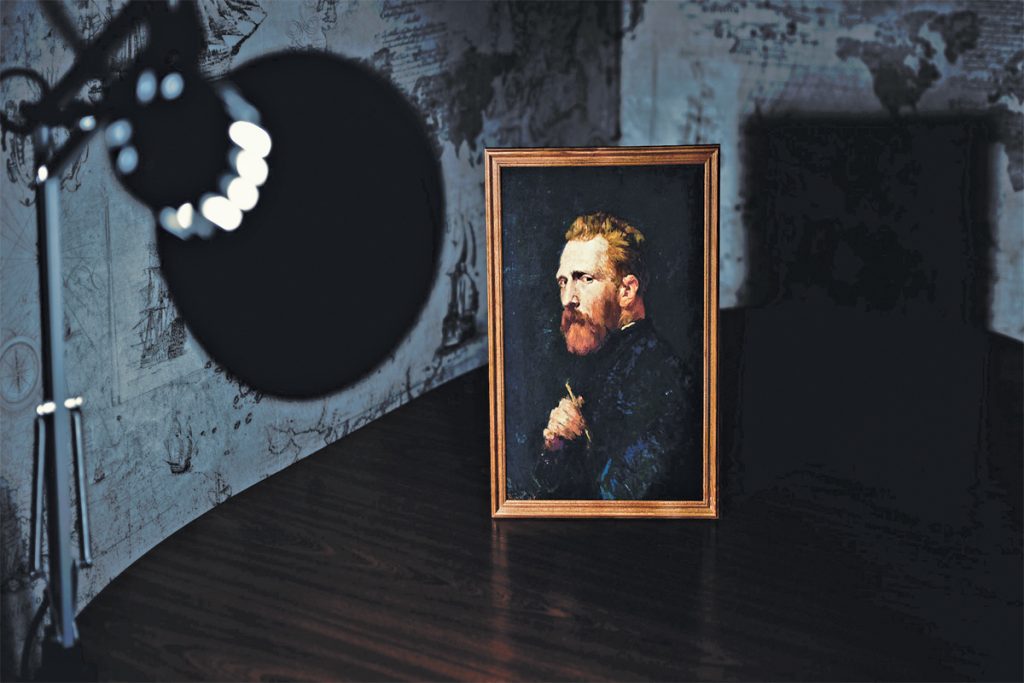An artist who struggled a lot during his lifetime and faced nothing but poverty, self-mutilation, mental breakdown and one day killed himself. He received no appreciation when he was alive, but became immensely popular after his death. We are talking about Van Gogh, whose full name was Vincent Willem van Gogh.

Van Gogh was born on 30th March, 1853 in Zundert, Netherlands. He is considered one of the most influential Dutch artists after Rembrandt van Rijn. Van Gogh is one of the greatest post-impressionist painters. Van Gogh’s artistic career only lasted for 10 years (from 1880 to 1890). He painted mostly in three genres — still life, landscape, and figures. In his short career, he created two thousand and one hundred artworks, and most of them were created in the last two years of his life.
The incident which shook Van Gogh
In the winter of 1879-80, Van Gogh was doing missionary work among the impoverished population of Borinage — a coal-mining region in southwestern Belgium. Living among the poor made him vulnerable and he gave away all his goods to them. Thereafter, he was dismissed by the church.
After this incident, he withdrew himself from the worldly affairs. “They think I am a madman,” he told an acquaintance, “because I wanted to be a true Christian. They turned me out like a dog, saying that I was causing a scandal.” It was after this event that he started taking painting seriously. The realisation of his creative power restored self-confidence in him.

The stay in Paris in February 1886 led to the creation of his idiom and style of brushwork. His palette became more vibrant and his vision less traditional. By the summer of 1887, he started using a lot more colours in his work. At the beginning of 1888, Van Gogh’s post-impressionist style crystallised which resulted in masterpieces such as ‘Portrait of Pere Tanguy’ and ‘Self-Portrait in Front of the Easel’. After some time, he became physically exhausted and left Paris in 1888.
Physical and Mental Breakdown
Van Gogh’s style was spontaneous and instinctive as he worked with great speed and intensity, with a determination to capture a mood while under its influence. After 12 months, he returned to Paris and started working with Gauguin.
Gauguin arrived in October 1888, and after two months of working together, they realised that their thoughts do not match. The real disaster struck on Christmas Eve in 1888. Van Gogh became physically and mentally exhausted and snapped. Reportedly, he chased Gauguin with a razor but eventually ended up cutting the lower half of his own left ear.

When Van Gogh resumed his work after the incident, he created ‘Self-Portrait with Bandaged Ear and Pipe’, ‘La Berceuse’ and several still lives. Unfortunately he again started showing symptoms of mental disturbance, which were severe enough for him to be sent him back to the hospital.
By the April of 1889, fearing the loss of his renewed capacity to work, he asked to be temporarily kept in the asylum of Saint-Rémy-de-Provence in order to be under medical supervision. Van Gogh stayed there for 12 months and faced moods of calm and despair. During this time, he created the famous ‘The Starry Night’, ‘Garden of the Asylum’, ‘Cypresses’, ‘Olive Trees’, ‘Les Alpilles’, portraits of doctors, and interpretations of various artists. Faced with having no choice of his subject, he used his memory to paint and create.
The Realization of his loneliness
Van Gogh involved himself more imaginatively in the drama of elements, developing a style based on dynamic forms and a vigorous use of line. He started missing his brother Theo and wanted to see him. He arrived in Paris in 1890 to meet Theo. After four days, he went to stay with a homeopath doctor and artist, Paul Ferdinand Gachet. In despair of never overcoming his loneliness or be cured, Van Gogh shot himself. He did not die immediately; he was found lying in a pool of blood. In his wounded state, he said, “I shot myself… I only hope I haven’t botched it.”

That same evening while he was being interrogated by the police, he said, “What I have done is nobody else’s business. I am free to do what I like with my own body.” Van Gogh died after two days. During his entire lifetime, he sold only one painting and only one article was written about him. Van Gogh is considered as a struggling genius whose work was unappreciated when he was alive and lived most of his life in isolation.
Letters
Letters have kept the life story of a legend like Van Gogh alive all these years. Van Gogh and his young brother Theo used to exchange letters. Their friendship was strong, and the thoughts and theories of art by Van Gogh are recorded in hundreds of letters they both exchanged between 1872 till 1890.

Theo Van Gogh was an art dealer and provided his brother financial and emotional support. Sadly he died within six months of Van Gogh’s suicide. Theo kept all the letters with him safely. After Theo’s death, his widow Johanna arranged for the publication of their letters.
The majority of these letters were published in 1914. Translator Arnold Pomerans wrote that the publication of the letters added a “fresh dimension to the understanding of Van Gogh’s artistic achievement, an understanding granted us by virtually no other painter.”
The Van Gogh Museum
Van Gogh’s nephew and namesake, Vincent Willem Van Gogh, after his mother’s death, inherited the estate in 1925. In early 1950s, he arranged the publication of all the letters in four volumes and several languages.
He also began negotiation with the Dutch government to purchase the entire collection and house it. Theo’s son took participation in the project hoping that the work will be exhibited under good conditions. The project began in 1963, and The Van Gogh Museum was opened in Museumplein in Amsterdam in 1973 and since then is running successfully. In the year 2015, it had a record of 1.9 million visitors from all around the world.


